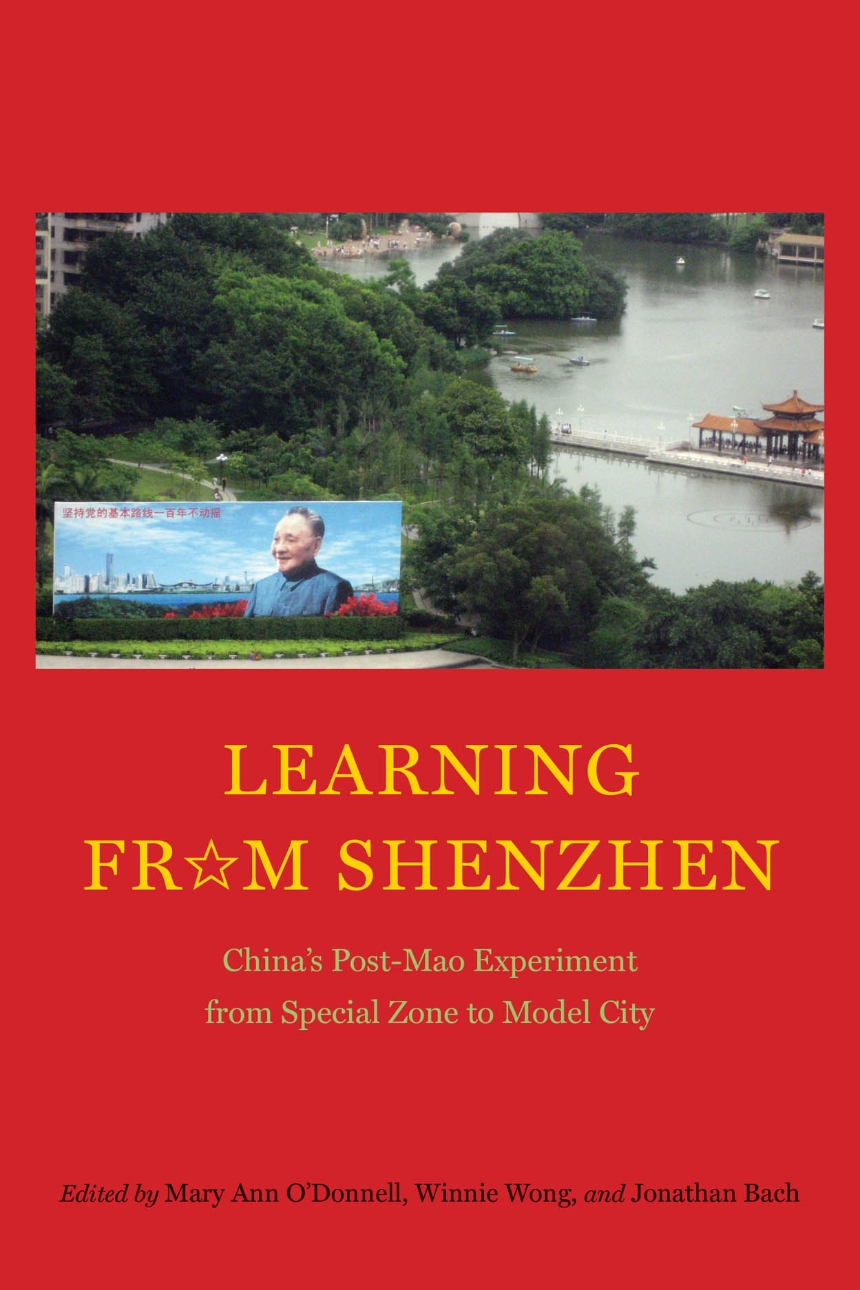Learning from Shenzhen
China’s Post-Mao Experiment from Special Zone to Model City
9780226401126
9780226401096
9780226401263
Learning from Shenzhen
China’s Post-Mao Experiment from Special Zone to Model City
This multidisciplinary volume, the first of its kind, presents an account of China’s contemporary transformation via one of its most important yet overlooked cities: Shenzhen, located just north of Hong Kong. In recent decades, Shenzhen has transformed from an experimental site for economic reform into a dominant city at the crossroads of the global economy. The first of China’s special economic zones, Shenzhen is today a UNESCO City of Design and the hub of China’s emerging technology industries.
Bringing China studies into dialogue with urban studies, the contributors explore how the post-Mao Chinese appropriation of capitalist logic led to a dramatic remodeling of the Chinese city and collective life in China today. These essays show how urban villages and informal institutions enabled social transformation through cases of public health, labor, architecture, gender, politics, education, and more. Offering scholars and general readers alike an unprecedented look at one of the world’s most dynamic metropolises, this collective history uses the urban case study to explore critical problems and possibilities relevant for modern-day China and beyond.
Bringing China studies into dialogue with urban studies, the contributors explore how the post-Mao Chinese appropriation of capitalist logic led to a dramatic remodeling of the Chinese city and collective life in China today. These essays show how urban villages and informal institutions enabled social transformation through cases of public health, labor, architecture, gender, politics, education, and more. Offering scholars and general readers alike an unprecedented look at one of the world’s most dynamic metropolises, this collective history uses the urban case study to explore critical problems and possibilities relevant for modern-day China and beyond.
360 pages | 24 halftones | 6 x 9 | © 2017
Asian Studies: East Asia
Geography: Urban Geography
History: Asian History
Reviews
Table of Contents
Foreword
Ezra F. Vogel
Introduction: Learning from Shenzhen: Experiments, Exceptions, and Extensions
Mary Ann O’Donnell, Winnie Wong, and Jonathan Bach
Part 1 Experiments (1979–92)
1 Shenzhen: From Exception to Rule
Jonathan Bach
2 Heroes of the Special Zone: Modeling Reform and Its Limits
Mary Ann O’Donnell
3 The Tripartite Origins of Shenzhen: Beijing, Hong Kong, and Bao’an
Weiwen Huang
4 How to Be a Shenzhener: Representations of Migrant Labor in Shenzhen’s Second Decade
Eric Florence
Part 2 Exceptions (1992–2004)
5 Laying Siege to the Villages: The Vernacular Geography of Shenzhen
Mary Ann O’Donnell
6 The Political Architecture of the First and Second Lines
Emma Xin Ma and Adrian Blackwell
7 “They Come in Peasants and Leave Citizens”: Urban Villages and the Making of Shenzhen
Jonathan Bach
8 Sex Work, Migration, and Mental Health in Shenzhen
Willa Dong and Yu Cheng
Part 3 Extensions (2004–Present)
9 Shenzhen’s Model Bohemia and the Creative China Dream
Winnie Wong
10 Preparedness and the Shenzhen Model of Public Health
Katherine A. Mason
11 Simulating Global Mobility at Shenzhen “International” Airport
Max Hirsh
Conclusion: Learning from Shenzhen
Mary Ann O’Donnell, Winnie Wong, and Jonathan Bach
Glossary
Contributors
Acknowledgments
Index
Ezra F. Vogel
Introduction: Learning from Shenzhen: Experiments, Exceptions, and Extensions
Mary Ann O’Donnell, Winnie Wong, and Jonathan Bach
Part 1 Experiments (1979–92)
1 Shenzhen: From Exception to Rule
Jonathan Bach
2 Heroes of the Special Zone: Modeling Reform and Its Limits
Mary Ann O’Donnell
3 The Tripartite Origins of Shenzhen: Beijing, Hong Kong, and Bao’an
Weiwen Huang
4 How to Be a Shenzhener: Representations of Migrant Labor in Shenzhen’s Second Decade
Eric Florence
Part 2 Exceptions (1992–2004)
5 Laying Siege to the Villages: The Vernacular Geography of Shenzhen
Mary Ann O’Donnell
6 The Political Architecture of the First and Second Lines
Emma Xin Ma and Adrian Blackwell
7 “They Come in Peasants and Leave Citizens”: Urban Villages and the Making of Shenzhen
Jonathan Bach
8 Sex Work, Migration, and Mental Health in Shenzhen
Willa Dong and Yu Cheng
Part 3 Extensions (2004–Present)
9 Shenzhen’s Model Bohemia and the Creative China Dream
Winnie Wong
10 Preparedness and the Shenzhen Model of Public Health
Katherine A. Mason
11 Simulating Global Mobility at Shenzhen “International” Airport
Max Hirsh
Conclusion: Learning from Shenzhen
Mary Ann O’Donnell, Winnie Wong, and Jonathan Bach
Glossary
Contributors
Acknowledgments
Index
